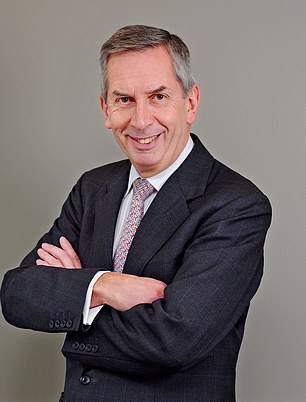Now’s the time to give your ISA a makeover
More than twenty years after its debut, the Isa (individual savings account) is getting a new look.
Jeremy Hunt is expected to reveal plans to ‘boost’ the tax-free scheme in his Autumn Statement.
You can currently put £20,000 into an Isa tax-free each tax year. But an additional fee could be introduced by the Chancellor to encourage us to support British businesses.
Makeover: Most experts believe the key ingredient of an Isa should be a ‘one-and-done’ fund or trust, with a wide range of exposures
I would suggest that these reforms should prompt a critical review of your existing ISAS. Could they need a makeover too? Most experts believe that the key ingredient of an Isa should be a ‘one-and-done’ fund or trust, with a wide range of risks.
This cornerstone of your portfolio should focus on ‘companies with a dominant position within their sector that should be able to grow for many years to come’, as Juliet Schooling Latter of Fund Caliber puts it.
Or it can hold lower-risk assets, creating a cushion if you’re more cautious.
Not so long ago, the first choice would have been a fund led by a star manager.
But celebrity culture has been called into question by new performance data for the £5.5bn Lindsell Train Global Equity fund, managed by Nick Train, whose star is on the wane. Over the past five years, the fund has achieved a return of 23.3 percent, compared to 38.3 percent for the average fund.
By contrast, the £22.7bn Fundsmith fund, run by Train’s rival Terry Smith, has returned 52 per cent – thanks to bets on companies such as Novo Nordisk, the Danish maker of weight-loss drug Wegovy.

On the decline: Nick Train
Zoe Gillespie of RBC Brewin Dolphin highlights Fundsmith’s ‘highly structured and disciplined approach’. I’m a Fundsmith fan. But the picks from the range of experts I polled this week also include low-cost passive funds like Fidelity World Index and HSBC FTSE All World Index, which rely more on algorithms than people.
Other options are led by managers who are not famous.
For example, Bestinvest’s Jason Hollands suggests Alliance and the F&C, two investment trusts founded in the 19th century.
Craig Baker, Global Chief Investment Officer at Willis Towers Watson, general manager of Alliance Trust, delegates parts of the portfolio to various external teams, creating a spread of expertise. The largest holdings include Alphabet – owner of Google – Microsoft and ASML, the Dutch manufacturer of chip-making equipment.
Over the past five years, average global trust has increased by 29.3 percent. Alliance is up 49 percent, while F&C is up 32 percent. F&C also focuses on Microsoft and other American technology names, but also has interests in private equity.
Chris Metcalfe of asset manager IBOSS likes Rathbone Global Opportunities, whose manager James Thomson has outperformed the average global fund for 17 of his 20 years in charge.

Good return: Terry Smith
This is again partly the result of a focus on Microsoft and fellow tech titan Nvidia. The sheer size and potential of these pioneering companies makes them an almost automatic choice. Schooling Latter’s pick is Troy Income, whose largest holding is Paychex, the HCM (human capital management) specialist that handles tasks for employers, such as audits of remote workers.
If you prefer a different bias, Schooling Latter also suggests Orbis Global Balanced. This fund owns a portion of the iShares Physical Gold fund, based on the fact that “gold has outperformed everything over the last 6,000 years,” as the manager puts it.
A combination of gold, cash and corporate and government bonds make up the portfolio of the defensive trusts designed for those who don’t like too much risk. Ben Yearsley of Shore Financial Planning suggests Troy Trojan, where US Treasury bonds (T-bonds) make up more than a third of the portfolio, and Personal Assets, a trust where gold bullion and T-bonds represent 40 percent of the holdings.
Hollands names as his sleeper pick the Ruffer Trust, whose diverse portfolio includes T-Bonds, shares in BP and the Taiwan Semiconductor Manufacturing Company, maker of the chips for the ChatGPT AI (artificial intelligence) system.
The share prices of both Personal Assets and Ruffer are at a slight discount to their net asset value (NAV), making them a bargain, provided you can be patient.
If the chancellor decides to offer the additional compensation for UK shares, Dan Boardman-Weston of BRI Wealth Management suggests Gravis UK Listed Property and Time UK Infrastructure Income.
These funds put money into mutual fund shares.
With any luck, they could benefit from a reduction in discounts, which he said presents “a fantastic long-term opportunity,” especially for younger investors.
When Isas arrived in 1999, data on the contents and returns of the funds was difficult to obtain. Such information is now available online for free. Use it to improve the Isas you own and to ensure that you are enriched by the Chancellor’s improvements.
Some links in this article may be affiliate links. If you click on it, we may earn a small commission. That helps us fund This Is Money and keep it free to use. We do not write articles to promote products. We do not allow a commercial relationship to compromise our editorial independence.
